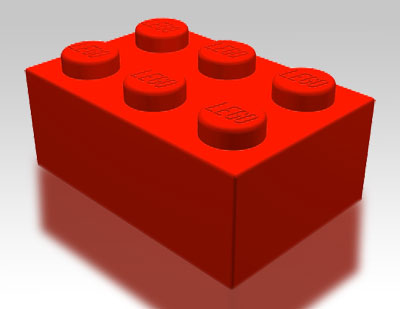
Business Week reports [edited]
Dig through any child's toy chest across the world and you're sure to find a few rectangular LEGO bricks in the mix. The colourful bricks have retained their popularity since being introduced 48 years ago.
The LEGO Group's story begins in 1932, when Ole Kirk Christiansen began making wooden toys for children. However, the LEGO brick - as we know it today - wasn't launched until 1958.
The plastic bricks are part of an interlocking system that has just the right amount of grip: The bricks hold together well but can be taken apart easily by a child. And consistency has been key. The bricks produced today can interlock with those produced back in 1958.
The rise in popularity of LEGO bricks can be attributed to the amount of imagination a child can use to build something with the bricks. The bricks are so versatile that the LEGO Group has calculated that just six eight-stud bricks can be arranged in 915,103,765 different ways.
Today LEGO bricks are primarily produced in a factory at the company's headquarters in Denmark. The bricks are so meticulously made that the company claims that out of every 1 million elements made, just 18 will be declared defective and removed from the set.
The LEGO Group produces 15 billion components a year - that's 28,500 a minute. The factory also produces 306 million tiny rubber tyres a year, making it the world's No. 1 tyre manufacturer.
Fascinating fact to throw into a lagging conversation (FFTTIALC): The word 'LEGO' is derived from the Danish expression 'leg godt', meaning 'play well'. It also means 'I study' in Latin.
------------

No comments:
Post a Comment